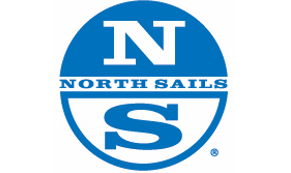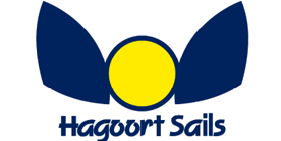A Maverick Fastnet - Part One
30 augustus 2015 - A Maverick Fastnet in three episodes. The Fastnet for most crews represents the culmination of months of preperation, including safety courses and qualifying events and will prove a test of character and skills over the historic and challenging 608 mile course. Off to the Races.
The end of the annual Cowes Week Regatta is marked by parties and pageantry, the RAF Red Arrows airshow and an impressive fireworks display over the Solent. Crews pack the pubs on the Cowes High Street, celebrating and commiserating late into the night, but for the 370 yachts readying for the biennial offshore Fastnet Race it is a time for last tasks, and for rest and reflection. For most crew the race represents the culmination of months of preparation, including safety courses and qualifying races, and will prove a test of character and skills over the historic and challenging 608 mile course.
Sleepless nights and pre-race nerves are not the exclusive domain of the Fastnet first-timers and Corinthian crews, but also for the professionals in the top classes. Entries include the fastest and most technologically advanced monohulls and multihulls, all competing for the official trophies but also to decide private duels between powerful owners and teams.
Off to the Races
Late Sunday morning boats began to leave their berths in the Cowes Marinas lining the river Medina, merging into a procession out to the Solent. Instead of first hoisting race sails the participants are required to pass an inspection boat with their mandatory storm sails in place -- small triangles of heavy fluorescent-orange cloth. These sails are also a vivid reminder that the Fastnet is a long offshore race with potential fast-changing and severe conditions, and many of the safety innovations and rules are a consequence of earlier Fastnet tragedy and loss.
The starts are staggered, beginning with the smaller classes and finishing with the top classes and boats. The exception is the multi-hulls, who are given a clear start to allow them the safest and fastest start to their race -- the trimaran ‘Spindrift’, seemingly a cross between a swooping pteradactyl and a Star Wars X-fighter, spans nearly a third of a football field. In the light winds the big trimarans struggled to gain speed and lumbered slowly away, a few TV helicopters overing behind and chased by a small pack of media boats.
Even with over 600 miles and several days sailing ahead, the starts are as competitive as a short regatta race and any gains can pay back handsomely later in the race. We watched the starts for smaller boats in the IRC 3 and 4 classes, and with little wind and a building westerly tide pushing boats toward the line, several of the yachts were forced over early and had to return to restart. The tide was running stronger end of the line closest to the Cowes ‘Castle’ and her start canons, and as our IRC 2 start approached the majority of the 72-strong field bunched closely toward that end. We held back from the fray and positioned ourselves in a relatively clear section a hundred yards further up the line, trading off some of the tide advantage for clear air, and as the last minutes counted down we were carried down toward the line.
Several boats miscalculated and drifted across early – and faced a slow sail back to re-cross the line – while fellow Dutch doublehanded Junique timed their ‘drift’ perfectly and coupled a strong start with terrific positioning in the strongest part of the current. They were closely followed by another top Dutch duo on Xcentric Ripper, and while we momentarily appreciated this exemplary start by our friends, we also worked back toward the swifter channel to help stem their early gains.
Sailing down the west Solent in a big fleet is exhilarating, with the larger boats overtaking the smaller ones, boats of all classes crossing tacks and employing short-race tactics, and later the biggest, fastest, coolest maxi boats slicing their way through the fleet. One moment we are heading toward the shallows and trying to tack out from our sistership J-120 Nunatek, but moments later top Dutch crewed boat Baraka was forced to duck us – but managed a few waves to their fellow Dutch competitor.
We held good speed with our light number 1 jib and began setting up and passing the backmarkers in IRC 3 and 4. Nearing the Needles we noticed a huge, evil looking thing with black hull and sails coming up the south shore quickly on port tack – Jim Clark’s (Netscape) 100 ft ‘Comanche’. As we continued on starboard I remarked to Ken “Let’s make the big guy duck us”, but Comanche accelerated away and gracefully glided past, through the fleet ahead, and onward to line honors a few days later.
The Solent exits to the open sea between a picturesque line of white chalk promontories along the west edge of the Island called ‘The Needles’ , and a shallow, shifting stone and gravel bank marking the northern limit of the channel called ‘The Shingles’. Sailing swiftly in now moderate wind, riding several knots tidal current, we short-tacked in the swifter current of the main channel as we passed the Shingles. Far off to starboard we saw one of the fastest rated boats flanking the fleet, but inexplicably they drove straight into the Shingles and soon lay hard aground. A top 63-foot racer from America, with professional and experienced crew, fell victim to one of the most obvious (and visually conspicuous) Solent hazards. Her name? ‘Lucky’.
Exiting the Needles, we faced a fresh series of tactical decisions. If steady winds were forecast we would head closer to shore and take advantage of tidal races across the first two headlands before the tide turned, but with a very light forecast ahead we headed west further offshore. Some of the fleet angled even south for the prospect of better breeze, while we debated whether to stay slightly closer in where it would be easier to anchor, but with a stronger tide against, or to also sail further south where the tide would be less but the greater depth would make anchoring a challenge.
The wind died off in the evening, and we found ourselves not far from Xcentric Ripper and about three miles ahead of our old boat, So What (since renamed 'Pincer Movement’). As the tide turned against and we readied the anchor, but as we lay in 60 meters (50 yds) water we needed to add extra line – first a spare line, then the mooring lines. Xcentric Ripper and Pincer quickly held fast on their anchors, while we could not get it to ‘bite’ and drifted back eastward at an increasing rate. We triaged our remaining line and added a few lengths of our running rigging; the anchor bit intermittently but failed to hold fast. At this point we were moving backwards at a few knots, our nearly 3 mile buffer on Pincer was lost, and more alarmingly, we had little steerage and were headed directly toward them. It would certainly earn a bit of unwanted infamy, running into our old boat with our new boat in the middle of a Fastnet Race, but the anchor fortunately caught on something, perhaps an old Armada wreck or a Messerschmitt, and we stopped our costly and painful drift backwards.
Lying still at anchor in the middle of a race is neither enjoyable or relaxing. It is silent save the sound of the current slipping past, the flat black water reflecting mastlights and the shore. Every wisp of wind and ripple on the sea raises hope for an escape, and after several anxious hours a few knot breeze arrived and held. The boats around us slipped anchor easily but ours was immoveable, despite best efforts and grunts worthy a woman tennis player from Ken on the bow. After 30 minutes of pulling and steering up and around the anchor line she broke free, though our neighbors were long departed.
We tried to keep a brave face but we had lost heaps of time. Dreams of the podium and the winner’s Rolex were dashed but we had 500 miles to go. We nursed the boat forward in the zephyrs and began to play catch-up.
Fastnet Race a/b Junique
27 augustus 2015 - Wat een avontuur die Fastnet Race. Een race die alles behelst van een spannende start, weinig tot geen wind, springtij mee en heel veel deelnemers die op zoek zijn naar de meest... Lees verder
A Maverick Fastnet - Part Two
31 augustus 2015 - The light breeze held through early the next day; much of the fleet sailed further toward the coast to try to catch a later sea breeze, or to kedge easier in the shallower water... Lees verder













